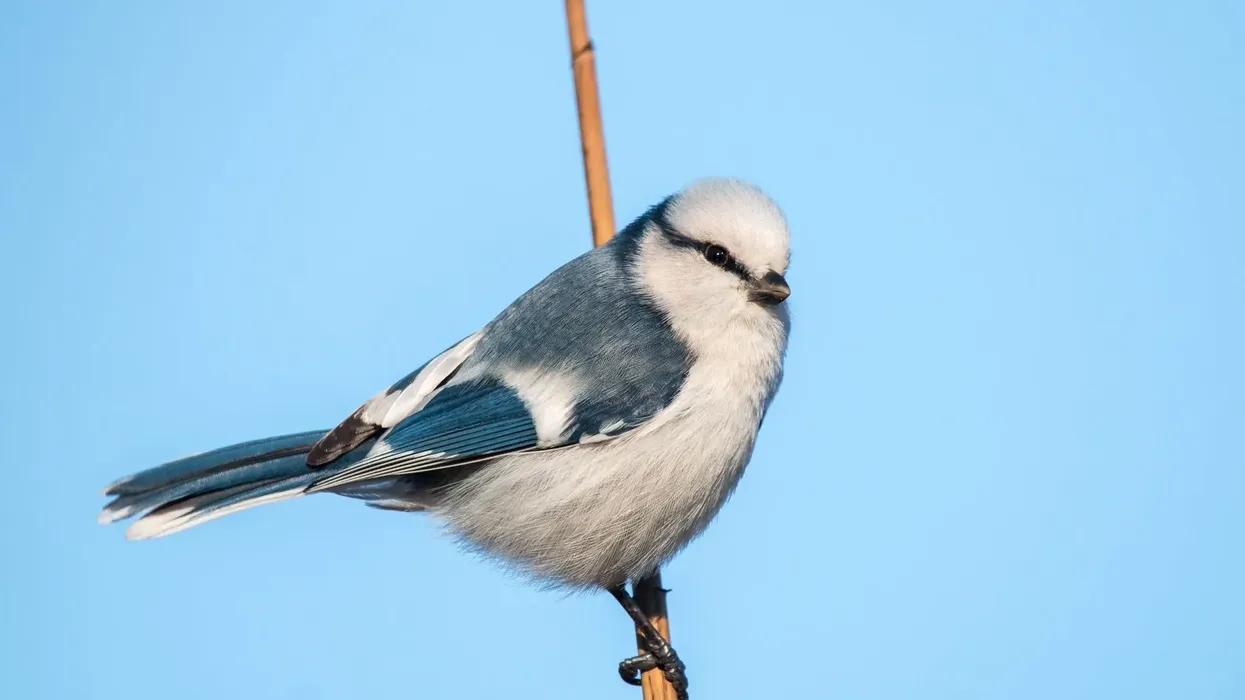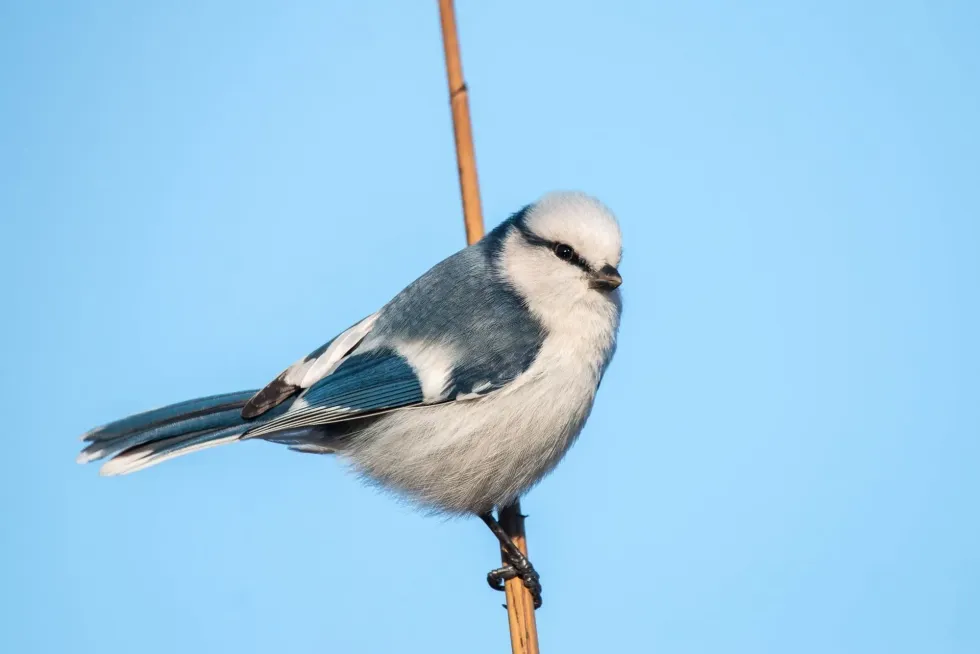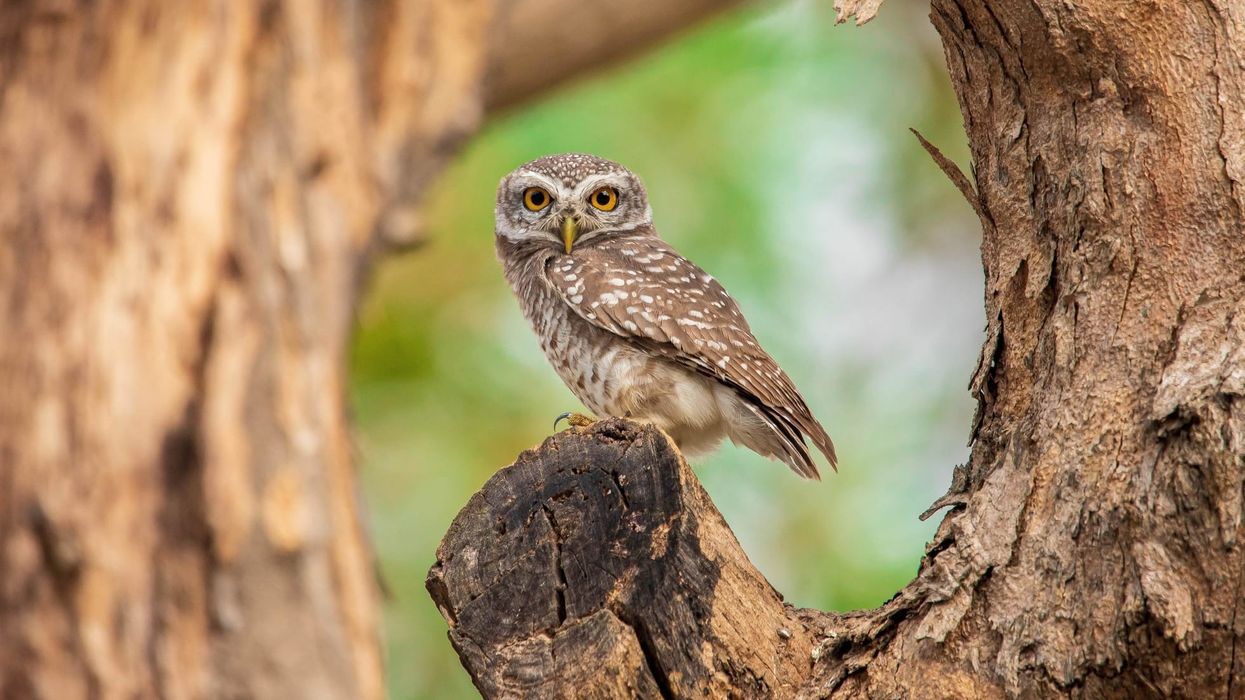Is your child interested in songbirds like the nightingale? You may introduce them to these beautiful and stunning azure tits. Hopefully, the color palette and the chirpy nature of the avians will fascinate them and catch their attention.
The azure tit is a passerine bird and this avian is well adapted to perching on trees. Usually, all songbirds are passerine by nature.
The tit azure belongs to the family Paridae which is a family of tits, titmice, and chickadees. This avian is the eastern counterpart of the Eurasian blue tit. These two birds are known to interbreed as well.
According to some sources, the bird was previously called the Parus cyanus. The bird can thrive well in subarctic temperatures and it can adapt extremely well to the surrounding environment.
Like reading about these azure tits and want to know more about them? Let's continue for more fun facts. If you like reading about these azure tits, you may also like reading about the Hudsonian godwit and marbled godwit.
Azure Tit Interesting Facts
What type of animal is an azure tit?
The azure tit is a bird belonging to the phylum Chordata and the order Passeriformes.
What class of animal does an azure tit belong to?
The azure tit belongs to the class Aves, meaning it is a bird.
How many azure tits are there in the world?
According to the International Union for Conservation of Nature (IUCN) Red List of Threatened Species, there are 20,000-99,999 mature individual birds in the world.
Where does an azure tit live?
The azure tit habitat consists of shrublands, deciduous forests, and wetlands. The bird is found in the habitat of coniferous forests as well. These bird prefers birch, willow, and juniper trees.
What is an azure tit's habitat?
The azure tit (Cyanistes cyanus) habitat is found in Russia and Central Asia. The bird is also found in Pakistan, Manchuria, and northwest China.
Who do azure tits live with?
The birds of this species may be seen in pairs during the breeding season. Though largely resident, some birds may move in flocks when migrating.
How long does an azure tit live?
It is not clear how long an azure tit lives but the average generation length of this bird is around four years.
How do they reproduce?
This species is monogamous. The azure tit lays eggs in the middle of the month of May in Russia.
However, the bird is a breeder throughout the breeding season of April to June. The breeding female lays the eggs in a nest. The nest is build of dry grasses, animal fur, animal wool, and moss.
The nests are built by the breeding female of the species in a hole or cavity of trees, in holes in buildings, or in rocks or on a pole. A clutch contains 7-11 eggs and the incubation period is 13 -14 days.
What is their conservation status?
According to the International Union for Conservation of Nature (IUCN) Red List of Threatened Species, the azure tit is classified as Least Concern. Also, according to the International Union for Conservation of Nature (IUCN) Red List of Threatened Species, the population of these birds decreasing. The population trend of the tit azure is a matter of concern.
Azure Tit Fun Facts
What do azure tits look like?
The tit azure has white or gray underparts and blue upperparts. There are dark stripes near the eye. The bird has a short bill. The bird has white and blue feathers on the tail. This tit azure is paler in comparison to other tits. The eyes are black.

How cute are they?
The azure tit (Cyanistes cyanus) of the order Passeriformes family is cute. The bird is tiny and has a stunning plumage.
How do they communicate?
These avians make very sweet sounds and their calls are soft. The call sounds like 'tirr tirr, tsirr-rirr' or 'tsirrup'. The call also may sound like 'tsee tsee chrrrrr chi-chi-chi'.
The musical notes of this bird sound like a prolonged 'tsee-tsee chi-chi-chi, cheweee, chi-chi-chi, cheweee'. The musical notes are almost similar between the crested tit and the blue tit. You may also compare it with the musical tone of a palm warbler.
How big is an azure tit?
The azure tit (Cyanistes cyanus) is a small bird. The azure tit (Cyanistes cyanus) of the order Passeriformes family is smaller than other small birds like mini macaws.
The azure tit (Cyanistes cyanus) is 4-5 in (12-13 cm) in length. In comparison to the great tit and blue tit, which are 4.9-5.5 in (12.5-14 cm), this bird is quite similar in size.
How fast can an azure tit move?
The lowland population of this bird does not move too much. They mostly remain confined in one place. Winter-based flocks tend to move short distances.
How much does an azure tit weigh?
The weight of the azure tit (Cyanistes cyanus) is around 0.37-0.56 oz (10·6–16 g).
What are the male and female names of the species?
There are no separate names for male and the female birds of this species.
What would you call a baby azure tit?
The baby azure tit (Cyanistes cyanus) may be called a chick.
What do they eat?
The azure tit (Cyanistes cyanus) is an omnivore. The diet includes fruits and seeds. Along with seeds, the diet also includes adult insects, larval insects, small invertebrates like aphids, pupae, and eggs.
Are they dangerous?
The bird can hiss and bite if it feels threatened.
Would they make a good pet?
These birds live around human settlements and come to bird feeders to feed on seeds and other foods readily. They are better left in the wild.
Did you know...
A cross between the tit azure and the blue tit results in an avian with a blue crown instead of a white one. A cross between the azure tit and the blue tit is called a pleskii.
The bird is called a tit in the European region. The family is mostly referred to as chickadees or titmice in North America. The name essentially signifies something small.
What are the different types of birds in the tit family?
The yellow-breasted tit (Cyanistes cyanus flavipectus) is a subspecies of the azure tit. The yellow-breasted tit is found in temperate forests. The Cyanistes cyanus berezowskii is also yellow-breasted and is found in China.
The Cyanistes cyanus carruthersi is found in north Tajikistan and Kyrgyzstan. Cyanistes cyanus cyanus is found in Belarus and the Western and Central European Russian region. The Cyanistes cyanus yenisseensis is found in Siberia, Mongolia, and the Far East Russian region. The Cyanistes cyanus tianschanicus is found in Kazakhstan and Kyrgyzstan.
The Cyanistes cyanus koktalensis is found in southeast Kazakhstan. The Cyanistes cyanus hyperrhiphaeus is found in the Urals, north Kazakhstan, and southwestern Siberia. Clearly, the bird is widespread in Central Asia and Russia.
Do azure tits migrate?
Most of the distribution of azure tits is non-migratory or sedentary in nature, meaning they are resident in the places they inhabit.
Here at Kidadl, we have carefully created lots of interesting family-friendly animal facts for everyone to discover! For more relatable content, check out these limpkin facts and snipe facts for kids.
You can even occupy yourself at home by coloring in one of our free printable stork coloring pages.








